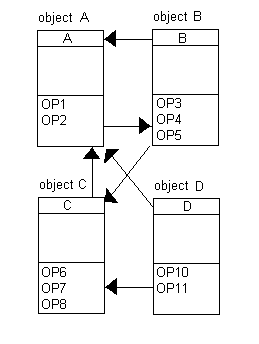 Communication among objects.
Communication among objects.CIS 375 SOFTWARE ENGINEERING
University Of Michigan-Dearborn
Dr. Bruce Maxim, Instructor
Object Oriented Analysis
Object Oriented Design
Object.
(Class = type vs. Instance = var)
Encapsulation
(Data & methods)
Message passing.
(Method call & return)
Inheritance.
(Polymorphism & reuse)
Dynamic bindings.
(Types & methods)
Identify the problem objects
(classes) = nouns (not procedure names)
Example:
Criteria:
(Object or not)
Specifying Attributes:
(define in terms of atomic objects)
Specifying Operations:
 Communication among objects.
Communication among objects.
Object Specification:
(0:1, 1:1, 0:many, 1:many)
Object Oriented Design:
Object
Advantages:
Design Principles For Modularity:
(ADT’s should be supported)